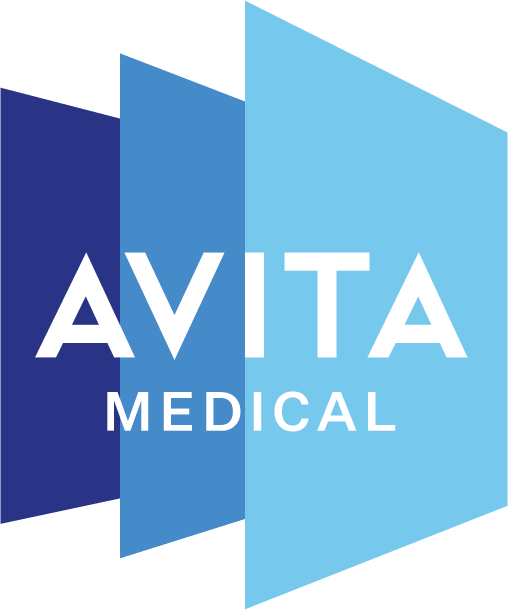Brian Hitt
In burn care, length of stay is more than a utilization metric – it reflects the complexity of treatment, resource use, and recovery. A new RECELL analysis using a national registry that collects data from 111 burn centers across the U.S. provides compelling real-world evidence of reduced inpatient resource demands in deep partial-thickness burns. This large-scale, multi-center assessment reinforces the growing body of evidence supporting the clinical and economic value of RECELL in modern burn care.
Impact to length of stay for burn care
The analysis, presented at the British Burn Association (BBA) Annual Meeting, drew from the National Burn Registry, which includes data on more than 6,300 patients treated with RECELL between 2019 and 2024. From this dataset, researchers evaluated a cohort of 724 patients with deep partial-thickness burns impacting up to 30% total body surface area (TBSA), treated with either skin cell suspension autograft (SCSA) prepared using the RECELL Device or standard split-thickness skin grafting (STSG).
Key results:
- Length of stay (LOS) was reduced by 35.7% or 5.61 days, for patients treated with SCSA alone compared to conventional autografting.
- Assuming an average burn bed cost of $7,554 per day, this reduction translates to an estimated cost savings of $42,000 per patient – especially relevant given that hospitalization, not drugs or devices, remains the primary driver of burn care costs.
Importantly, these findings align with earlier evidence. A 2019 health economic model estimated RECELL could reduce treatment costs by up to 17% at the burn center level, particularly in patients with deep partial-thickness and full-thickness burns between 10–40% TBSA.1 In a 2022 real-world study, researchers reported length of stay reductions of approximately 3.3 days and per-patient savings of nearly $37,000 in patients with burns ranging from <10–49% TBSA.2 A 2023 analysis focused on smaller burns (<20% TBSA) found similar benefits, with LOS reductions of around two days and estimated savings of $22,000 per patient.3 The new study reinforces those results across a larger patient population, broader timeframe, and more diverse care settings.
Why it matters: A health economics and value perspective
Length of stay remains one of the most consequential cost drivers in burn care, and is one of the few areas where hospitals can take direct action to manage both cost and capacity. Hospitals operating under inpatient DRG-based payment models face increasing pressure to contain costs within fixed reimbursements while maintaining care quality. By reducing length of stay, minimizing donor site burden, and streamlining wound closure, RECELL supports hospitals’ goals of delivering high-quality care under growing resource constraints. These are not marginal gains; the reduction in resource use is both clinically and economically meaningful.
Final thoughts: Delivering efficient care
This new study adds meaningful population-level evidence to the literature supporting RECELL. It confirms reductions in length of stay and hospital cost observed in earlier trials and smaller studies also hold true at scale, across diverse care settings.
For burn teams working to deliver efficient, high-quality care, and for systems managing cost under fixed payment structures, these findings provide a clear and credible basis to consider RECELL as part of their standard approach across burns types and sizes.
As burn centers continue to balance high-quality care with operational constraints, this study provides a compelling case for integrating RECELL into routine practice – not only because it works, but because it enables better outcomes with fewer resources.
Looking for more information? Learn about RECELL or watch a video case study with Jeffrey E. Carter, MD, FACS, or view reimbursement resources.

About the author
Brian Hitt leads Health Economics and Market Access at AVITA Medical, a leading therapeutic acute wound care company delivering transformative solutions that accelerate patient recovery.
1. Kowal, Stacey, et al. “Cost-Effectiveness of the Use of Autologous Cell Harvesting Device Compared to Standard of Care for Treatment of Severe Burns in the United States.” Advances in Therapy, vol. 36, no. 7, 2019, pp. 1715–1729. Springer, https://doi.org/10.1007/s12325-019-00961-2.
2. Carter, Jeffrey E., et al. “Length of Stay and Costs with Autologous Skin Cell Suspension versus Split-Thickness Skin Grafts: Burn Care Data from US Centers.” Advances in Therapy, vol. 39, no. 11, 2022, pp. 5191–5202. Springer, https://doi.org/10.1007/s12325-022-02306-y.
3. Carson, Joshua S., et al. “Analysis of Real-World Length of Stay Data and Costs Associated with Use of Autologous Skin Cell Suspension for the Treatment of Small Burns in U.S. Centers.” Burns, vol. 49, no. 3, 2023, pp. 607–614. Elsevier, https://doi.org/10.1016/j.burns.2022.11.007.




